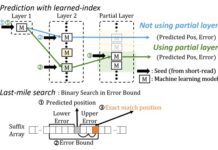Cotton, the primary source of natural fiber worldwide, has played a significant role in the textile industry. While several cotton species exist, only four are suitable for textile production. DePaul University computer scientists employed a bioinformatics approach to reconstruct the genome of a significant cotton species, specifically the African domesticated Gossypium herbaceum cultivar Wagad. This breakthrough discovery offers scientists a comprehensive comprehension of the evolutionary process involved in the domestication of wild cotton over the ages. This knowledge can empower cotton farmers in the United States, Africa, and other regions to make informed crop management and protection decisions.
Genome Sequencing and Annotation
To shed light on the domestication of G. herbaceum, researchers sequenced and assembled the genome of the G. herbaceum cultivar (cv.) Wagad was the first domesticated accession of this species. By employing advanced sequencing technologies and comparative genomics, the researchers generated a chromosome-level assembly and compared it with existing genome sequences.
Harnessing Advanced Computational Techniques
The team undertook their task by delving into the realm of DNA sequence data analysis. They initiated the reconstruction of the Wagad genome by meticulously assembling top-notch, elongated DNA sequences obtained through cutting-edge Pacific Biosciences sequencing technology. Subsequently, they employed the remarkable Bionano genomics whole genome maps to organize and align the initial assembly. To add the finishing touches, they utilized Hi-C sequencing data from Phase genomics to construct chromosomal-level genomes, completing their comprehensive endeavor.
In order to grasp the broader perspective, the team delved into the historical context of cotton cultivation. Cotton, predominantly grown for its fiber, exhibits this characteristic regardless of its geographical origins. The researchers embarked on a quest to uncover distinctions between cotton and a closely related species by employing comparative genomics. Furthermore, they meticulously examined annotated genes and meticulously documented their respective functions. Throughout their investigation, the researchers made a remarkable discovery: the presence of numerous genes associated with fiber composition as they meticulously scrutinized various segments of the genome.
Comparing Domesticated and Wild G. herbaceum
The comparison between the domesticated G. herbaceum cultivar (cv.) Wagad and the wild G. herbaceum subspecies africanum revealed high co-linearity with a few exceptions, including major inversions. The analysis also identified fixed single nucleotide polymorphisms (SNPs) and derived nonsynonymous mutations that occurred in specific genes. These mutations, which account for approximately 25% of the genes, indicate putative differences between wild and domesticated G. herbaceum.
Implications for Modern Breeding Programs
The implications of unraveling the genetic changes associated with domestication in G. herbaceum extend beyond scientific curiosity. This knowledge has a practical impact on modern breeding programs aimed at improving crop traits. By elucidating the molecular basis underlying improved phenotypes, breeders can expedite the process of crop improvement and develop cultivars with enhanced fiber quality, disease resistance, and overall productivity. Furthermore, comparing wild and domesticated germplasm allows for the identification of possible genes related to disease resistance and other desired features.
Conclusion
The genomic insights obtained from the high-quality genome assembly of the G. herbaceum cultivar (cv.) Wagad provides a comprehensive understanding of the domestication process in this diploid cotton species. The comparison with the wild G. herbaceum subspecies africanum revealed structural variations and specific genetic changes associated with domestication. Furthermore, the transcriptomic analysis shed light on the differential gene expression during fiber development.
These findings contribute to broader efforts to improve resources for A-genome cotton and enhance our understanding of its domestication. Ultimately, this understanding can be leveraged to develop new strategies in cotton breeding programs, leading to improved fiber quality, disease resistance, and overall crop productivity in G. herbaceum and related species. This research offers a significant advancement towards assuring a sustainable and successful future for the cotton industry, with the potential to positively influence cotton growing techniques everywhere.
Article Source: Reference Paper | Reference Article
Learn More:
Dr. Tamanna Anwar is a Scientist and Co-founder of the Centre of Bioinformatics Research and Technology (CBIRT). She is a passionate bioinformatics scientist and a visionary entrepreneur. Dr. Tamanna has worked as a Young Scientist at Jawaharlal Nehru University, New Delhi. She has also worked as a Postdoctoral Fellow at the University of Saskatchewan, Canada. She has several scientific research publications in high-impact research journals. Her latest endeavor is the development of a platform that acts as a one-stop solution for all bioinformatics related information as well as developing a bioinformatics news portal to report cutting-edge bioinformatics breakthroughs.















